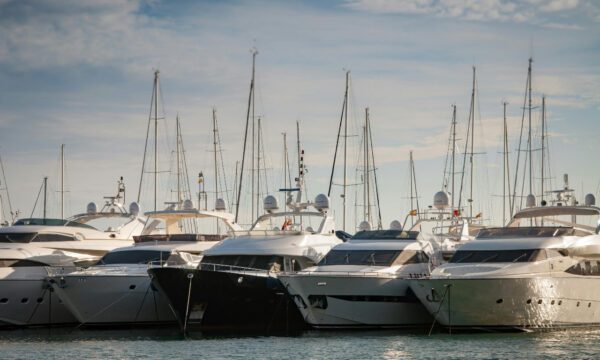Three future travel trends to watch

The travel industry is a dynamic landscape that is continuously evolving, and keeping abreast of the latest trends is no easy task.
With that in mind, read on as we look at some exciting future developments to keep an eye on in the global travel sector.
The rise of sustainable tourism
Climate change is a problem society cannot afford to ignore any longer, and the tourism sector has been scrutinised for its failure to check its environmental impact.
People are now more conscious about minimising their footprint, opting for eco-friendly options while holding tourism providers to higher standards.
World Travel and Tourism Council (WTTC) and Trip.com data highlights that travellers want sustainable alternatives.
Hotels and tour operators have had to adjust their offerings to attract more eco-conscious customers. Feeling the heat, airlines have introduced voluntary carbon offset options.
Destinations and companies have adopted different tactics to appeal to this market, with some resorting to using renewable energy sources and reducing plastic waste. Others focus on wildlife conservation and protecting biodiversity. These could soon become industry-standard practices.
Several countries worldwide have already adopted ecotourism. Costa Rica has been the poster child for the concept since the 1990s, and other countries will soon take a leaf out of their book.
Around one-quarter of Costa Rica’s land consists of national parks and protected areas, and tourists troop in to see this captivating, biodiverse environment.
Ecotourism will likely become a common concept in the coming years as people look for increasingly creative ways to battle climate change.
Kuwait as a new hub for entertainment tourism
Many countries in the Middle East are pushing to diversify their economies beyond crude oil.
These include Kuwait, which has outlined ambitious goals amid plans to expand its entertainment offerings. The Gulf state is developing several mega-projects designed to attract tourists.
They have earmarked billions of dollars for entertainment complexes such as shopping malls, theme parks and luxury hotels.
The United Arab Emirates (UAE) and Saudi Arabia have already earned a reputation as tourist hotspots, but Kuwait can knock them off their perch in the coming years.
Kuwait plans to distinguish itself through cultural, family-oriented attractions and high-end leisure options. The government plans to build entertainment districts that stylishly garnish Arabian design with modern amenities, delivering a unique experience.
Despite religious restrictions, Kuwait may also develop new casino entertainment spaces. The UAE has already handed Wynn Resorts a first commercial gaming licence, adopting a softer stance to gambling, and Saudi Arabia looks to heading in that direction. Kuwait will likely follow suit.
Casinos in entertainment complexes elsewhere attract international visitors looking for high-energy, lavish experiences. Kuwait can deliver an exceptional gaming experience for visitors.
Online casinos in Kuwait will also enjoy a new lease of life as the relaxation of gambling restrictions will help them operate with much more freedom.
Besides the casinos, entertainment hubs in Kuwait are expected to feature other attractions such as fine dining, luxury shopping and cultural performances.
With Kuwait integrating luxury, culture and modern entertainment in a single destination, it is poised to attract visitors while becoming a key player in regional and global tourism.
More travellers target budget-friendly destinations
Inflation and rising travel costs have forced travellers to prioritise affordability, creating demand for budget-friendly destinations. These locations offer value without sacrificing the quality of the experience.
This trend is already becoming increasingly common in travel. According to Squaremouth data, the most popular fall destinations tend to have below-average costs.
Places such as the Bahamas, the Dominican Republic, Mexico and the Philippines have become favourites for travellers because they balance cost and experience.
Thailand, Vietnam and Peru pull in budget-conscious travellers, attracting them with their affordable accommodation, low-cost food options and exciting cultural and natural attractions.
These countries offer enjoyable experiences such as jungle tours, beach getaways and ancient temple visits at a fraction of what it would cost to enjoy luxury destinations elsewhere.
Travel insurance and cheap flight deals are helping this trend gain traction. Travellers are also savvier. They are looking for new ways to reduce costs and have resorted to booking off-peak, using local transport systems and choosing homestays and budget hotels over high-end resorts.
Travel brands can seize this opportunity to garner more customers by designing packages and promotions for budget-minded travellers.
Agencies can curate bundles covering the essentials such as accommodation, insurance and transportation while highlighting affordable yet high-value destinations.
Travel companies must embrace this trend as it will be a mainstay in the industry as more travellers choose experience over extravagance to maximise their budgets.
The editorial unit
























Facebook
Twitter
Instagram
YouTube
RSS